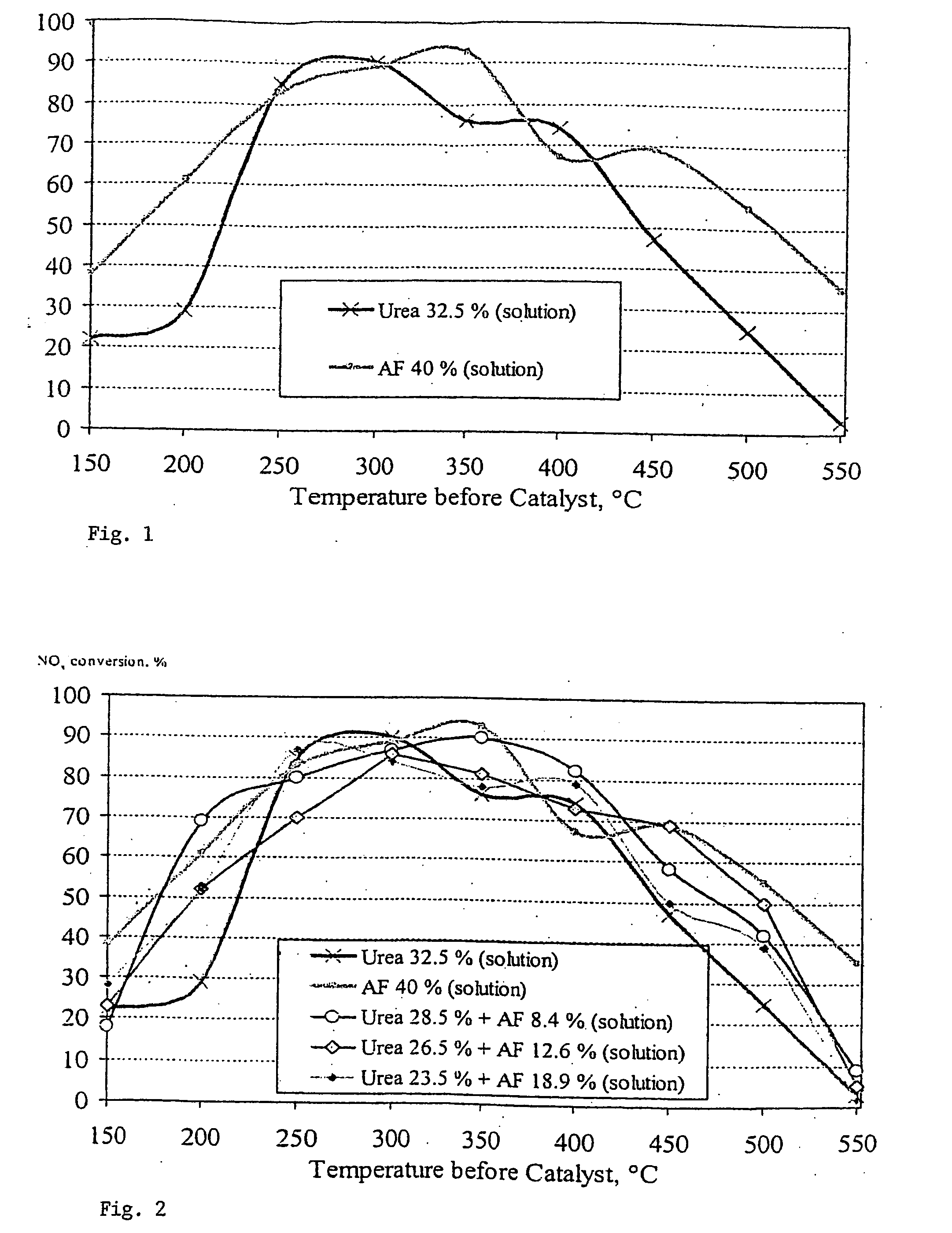Catalytic process for reducing nitrogen oxides in flue gases and reducing agent composition
- Summary
- Abstract
- Description
- Claims
- Application Information
AI Technical Summary
Benefits of technology
Problems solved by technology
Method used
Image
Examples
Embodiment Construction
[0018] The invention is described in further detail below by means of examples.
Decreasing the Freezing Point of a Urea Solution
[0019] Measurements were made with a view to determine the operability of ammonium formate as an anti-freezing agent of an aqueous solution of urea.
FreezingSolution [% of weight]point [° C.]30% urea−1120% urea + 20% ammonium formate−26.530% urea + 10% ammonium formate−21.5
[0020] The measurements showed that relatively strong undercooling occurred each time in the solutions. The minimum temperature reached approx. 5 degrees below the indicated freezing point. Thus, for instance, 20% urea+20% ammonium formate solution started freezing at −31° C., and subsequently the temperature rose to −26.5° C., which was then registered as the freezing point of this particular solution.
[0021] In terms of practical applications, a freezing point of −20° C. of the solution will be sufficient.
[0022] Since undercooling increases in the course of time, measurements were m...
PUM
 Login to View More
Login to View More Abstract
Description
Claims
Application Information
 Login to View More
Login to View More - R&D
- Intellectual Property
- Life Sciences
- Materials
- Tech Scout
- Unparalleled Data Quality
- Higher Quality Content
- 60% Fewer Hallucinations
Browse by: Latest US Patents, China's latest patents, Technical Efficacy Thesaurus, Application Domain, Technology Topic, Popular Technical Reports.
© 2025 PatSnap. All rights reserved.Legal|Privacy policy|Modern Slavery Act Transparency Statement|Sitemap|About US| Contact US: help@patsnap.com

